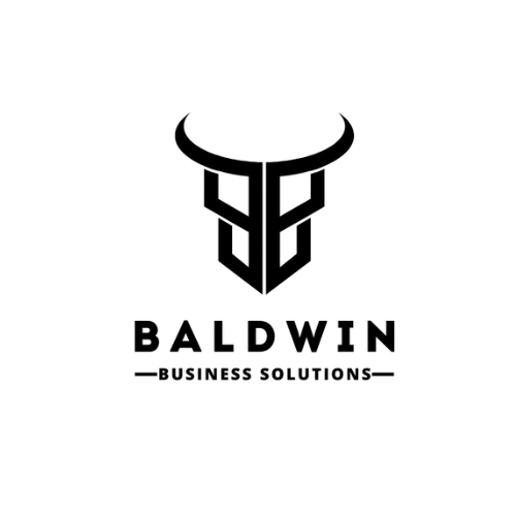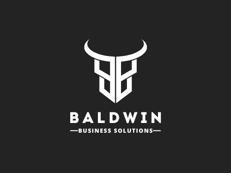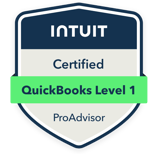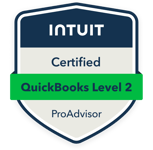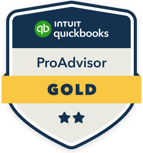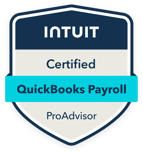The Crucial Role of Cost Accounting in Pricing and Profit Margins
12/21/20247 min read


Introduction to Cost Accounting
Cost accounting is a fundamental aspect of financial management that focuses on the recording, analysis, and control of costs associated with production and service delivery. Its primary purpose is to provide detailed insights into the various expenses a business incurs, enabling informed decision-making and effective management strategies. Unlike financial accounting, which is primarily concerned with external reporting to stakeholders, cost accounting is an internal tool that helps managers identify cost behavior, track operational efficiency, and optimize cost structures.
Through a systematic approach, cost accounting allows businesses to monitor direct and indirect costs linked to their products and services. This tracking system is essential for understanding the cost of goods sold (COGS) and determining profit margins. By analyzing the costs involved in production processes, organizations can identify areas for improvement, implement cost-control measures, and enhance overall profitability. Additionally, cost accounting provides a framework for comparing actual costs against budgets, enabling companies to assess performance and make necessary adjustments.
The significance of accurate cost information cannot be overstated, particularly in strategic decision-making. Managers require precise data to set competitive pricing strategies that maximize margins while remaining attractive to customers. By understanding these costs in depth, businesses can make informed choices about product lines, market expansion, and resource allocation. Furthermore, cost accounting plays a crucial role in forecasting future financial performance, as it helps organizations project potential cost changes and their impact on pricing strategies. Overall, cost accounting is an indispensable tool for organizations aiming to achieve financial stability and growth.
Understanding Cost Structures
Cost structures represent the financial framework within which a business operates. They are typically comprised of various components that significantly impact pricing strategies and profit margins. The two primary types of costs encountered are fixed costs and variable costs, alongside the total cost, which is the sum of these elements.
Fixed costs are expenses that do not fluctuate with the level of production or sales. These may include rent, salaries, and insurance. For instance, a manufacturing company incurs fixed costs related to factory leases and salaried employees irrespective of how many products are produced. Understanding fixed costs is crucial for firms as they determine the minimum revenue required to cover these obligations, thereby establishing a baseline for pricing decisions.
Conversely, variable costs change in direct proportion to the production volume. These include costs of raw materials, production supplies, and hourly labor. For example, a restaurant experiences variable costs based on the number of meals prepared, which necessitates careful monitoring. A comprehensive understanding of variable costs enables businesses to set prices that not only recover these expenses but also contribute to overall profitability.
Total cost encompasses both fixed and variable costs, providing a holistic view of a business’s expenditure. This aggregated cost structure is vital when determining the pricing strategy, as it influences the margin that can be maintained on products. For instance, if a technological startup outlines its total costs accurately, it can strategically price its innovative gadgets to remain competitive while still attaining desired profit margins.
In various industries, cost structures must be meticulously analyzed. For example, in the retail sector, understanding seasonal fluctuations can help in managing inventory costs effectively, influencing both pricing and profitability. Hence, recognizing the interplay between fixed, variable, and total costs is essential for informed decision-making in pricing and profit planning.
Importance of Accurate Cost Accounting Practices
Accurate cost accounting practices are integral to the financial health of an organization, directly influencing pricing strategies and profit margins. Cost accounting provides a framework for identifying, accumulating, and analyzing various expense elements associated with the business operations. By implementing comprehensive practices such as activity-based costing, standard costing, and variance analysis, organizations can achieve precise cost management and allocation.
Activity-based costing (ABC) is a methodology that improves the tracing of costs to specific activities. This approach allows businesses to accurately assign costs to products or services based on the actual consumption of resources. By identifying the true cost drivers, organizations can pinpoint areas of inefficiency and implement corrective measures. This ultimately contributes to more informed pricing decisions that reflect the actual costs incurred, enhancing profit margins in competitive markets.
Standard costing, on the other hand, establishes expected cost benchmarks for products or services. By analyzing variances between actual costs and standard costs, organizations can identify areas of over-expenditure or efficiency gains. This practice not only aids in monitoring performance but also facilitates strategic decision-making regarding pricing adjustments and operational improvements. Consistent use of standard costs helps in stabilizing pricing strategies, as variability in costs can lead to unpredictable profit margins.
Variance analysis plays a vital role in assessing discrepancies between budgeted and actual expenditures. Understanding these variances allows businesses to assess their operational efficiency and respond proactively to changes in the market. By regularly conducting variance analysis, organizations can maintain control over their costs and effectively adjust pricing strategies to ensure sustainable profitability. Accurate cost accounting practices, therefore, are indispensable tools for maintaining competitive pricing and optimizing profit margins, ensuring long-term financial success.
Consequences of Poor Cost Accounting Practices
Inadequate cost accounting practices can lead to a plethora of negative implications for businesses, significantly impacting pricing strategies and profit margins. When organizations fail to accurately track and allocate costs, they risk mispricing their products or services. This mispricing can occur for several reasons, including erroneous estimations of production costs, overlooked overhead expenses, or improper allocation of indirect costs. In turn, these inaccuracies can erode profit margins, creating a precarious financial situation for the business.
One illustrative example is the case of a mid-sized manufacturing company that consistently underestimated the costs associated with its production processes. Due to ineffective cost accounting methods, the company relied on outdated cost data, which led to setting selling prices that did not encompass the true costs incurred. As a result, the business experienced significantly reduced profit margins, struggling to cover operational expenses and ultimately facing financial instability. Such scenarios highlight the dangers that poor cost accounting can pose, revealing how vulnerable businesses can become when they lack accurate cost analysis.
Moreover, companies that fail to maintain effective cost accounting practices may also find themselves unable to make informed strategic decisions. A lack of reliable data regarding profit margins can impede the ability to assess which products or services are performing well. In some cases, businesses may unknowingly continue to invest in less profitable lines of their offerings, further exacerbating their financial decline. Furthermore, poor visibility into cost structures may hinder the management's ability to implement necessary adjustments, limiting their capacity for growth and adaptation in a competitive marketplace.
Ultimately, the consequences of inadequate cost accounting are far-reaching. Mistakes in cost tracking can lead to mispricing, eroding profit margins, and a struggle for financial health. Therefore, businesses must recognize the critical importance of maintaining accurate cost accounting practices in order to secure long-term sustainability and profitability.
The Connection Between Cost Accounting, Pricing, and Profit Margins
Cost accounting plays an indispensable role in guiding organizations through the complexities of pricing strategies and maintaining profit margins. By providing detailed financial insights into costs associated with products, services, and operational processes, cost accounting enables businesses to establish competitive pricing frameworks. This discipline involves the meticulous tracking of variable and fixed costs, which is critical for understanding the true cost structure and profitability of any offering.
Through effective cost analysis, businesses can ascertain which products or services yield the highest contribution margins. This information is vital for deciding how to position products in the marketplace. For instance, understanding the cost of production allows companies to set prices that not only cover expenses but also align with consumer expectations and competitor pricing. As a result, organizations can make informed decisions that reflect market conditions, enabling them to seize opportunities for greater market share while avoiding unnecessary price reductions that could jeopardize profit margins.
Additionally, a robust cost accounting system provides managers with the ability to assess the implications of pricing strategies on overall financial health. This deep dive into cost allocations can reveal inefficiencies and areas for optimization. For example, identifying high-cost production processes can prompt organizations to explore alternative methods or negotiate better supplier contracts, ultimately reducing costs and enhancing profit margins. Consequently, businesses are better equipped to implement dynamic pricing strategies that adapt to fluctuating market demands without eroding their profitability.
Ultimately, the connection between cost accounting, pricing decisions, and profit margins is evident. By prioritizing accurate cost assessments, organizations are not only able to establish competitive pricing but also ensure sustainable profitability that is vital in today's ever-changing business landscape.
Best Practices for Improving Cost Accounting
To effectively enhance cost accounting practices, organizations should consider implementing advanced software solutions that streamline data collection and analysis. Modern software applications are designed to provide real-time insights into costs associated with production, operations, and projects, enabling businesses to make informed decisions regarding pricing and profit margins. By integrating cost accounting software with existing financial systems, organizations can ensure accurate tracking of expenses and reduce the likelihood of errors that could affect overall financial health.
Additionally, fostering a culture of continuous improvement is essential for maintaining high standards in cost accounting. This approach encourages employees to regularly reflect on and reassess current practices, fostering an environment where feedback is actively sought and valued. By establishing metrics for success and encouraging team members to suggest innovative solutions, organizations can enhance their overall cost accounting processes. This not only promotes employee engagement but also contributes to a more efficient and streamlined operational workflow.
Regular audits also play a vital role in maintaining effective cost accounting practices. By conducting periodic assessments, businesses can identify discrepancies or areas where costs may be unexpectedly high. These audits can help ensure that cost accounting methods remain aligned with industry standards and can reveal insights into inefficient practices that need to be addressed. Establishing a routine for audits and acting upon the findings is crucial for the ongoing success of cost accounting as it provides opportunities for corrective actions and strategic planning.
Finally, investing in staff training is crucial for ensuring precise data management. Employees should possess a solid understanding of the tools and best practices associated with cost accounting. By providing training sessions and resources, organizations can equip their personnel with the knowledge required to accurately track and analyze costs. This investment in human capital directly contributes to improved data accuracy and ultimately supports better decision-making processes regarding pricing strategies and profit margins.
Conclusion and Call to Action
In the realm of business, effective cost accounting plays a pivotal role in formulating pricing strategies and optimizing profit margins. Throughout this blog post, we have examined how accurate cost tracking and analysis are foundational to establishing competitive pricing that reflects true product value while ensuring profitability. The importance of good cost accounting practices cannot be overstated; they allow organizations to better understand their cost structures, which in turn informs crucial business decisions.
By integrating cost accounting into the pricing process, companies can identify fixed and variable costs associated with their products or services. This knowledge facilitates more informed pricing strategies, ensuring that prices not only cover costs but also contribute to profitability. Moreover, we discussed how regular cost analysis helps in identifying inefficiencies and potential areas for savings, ultimately supporting businesses in enhancing their financial performance. The connection between cost accounting and profit margins is undeniable; organizations that prioritize accurate cost tracking and analysis are better positioned to maximize their profitability.
As we conclude this discussion, we encourage readers to critically evaluate their current cost accounting practices. Are there gaps in your cost-tracking methods? Can you identify ways to enhance accuracy and efficiency in your pricing strategies? Taking the time to assess and refine these practices is essential for long-term business success. Embracing robust cost accounting can lead to more strategic pricing decisions and improved profit margins. Therefore, we invite you to embark on this journey of improvement, ensuring that your business leverages cost accounting to its fullest potential.
